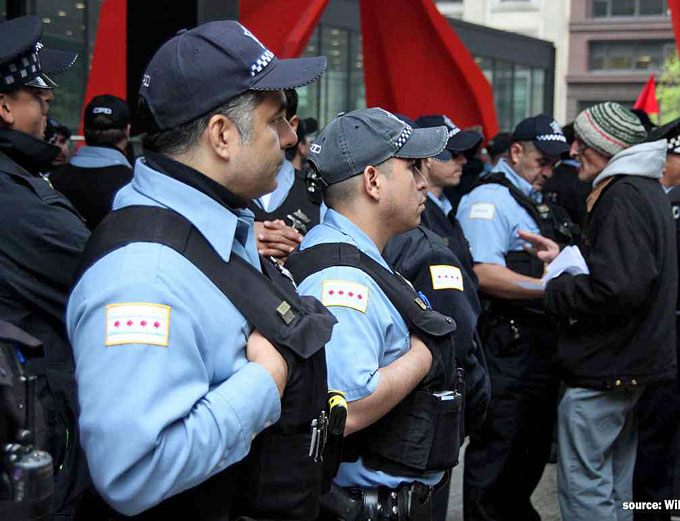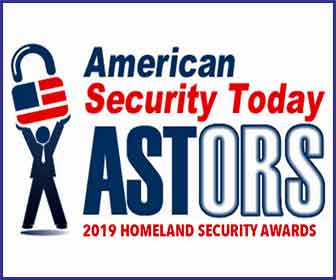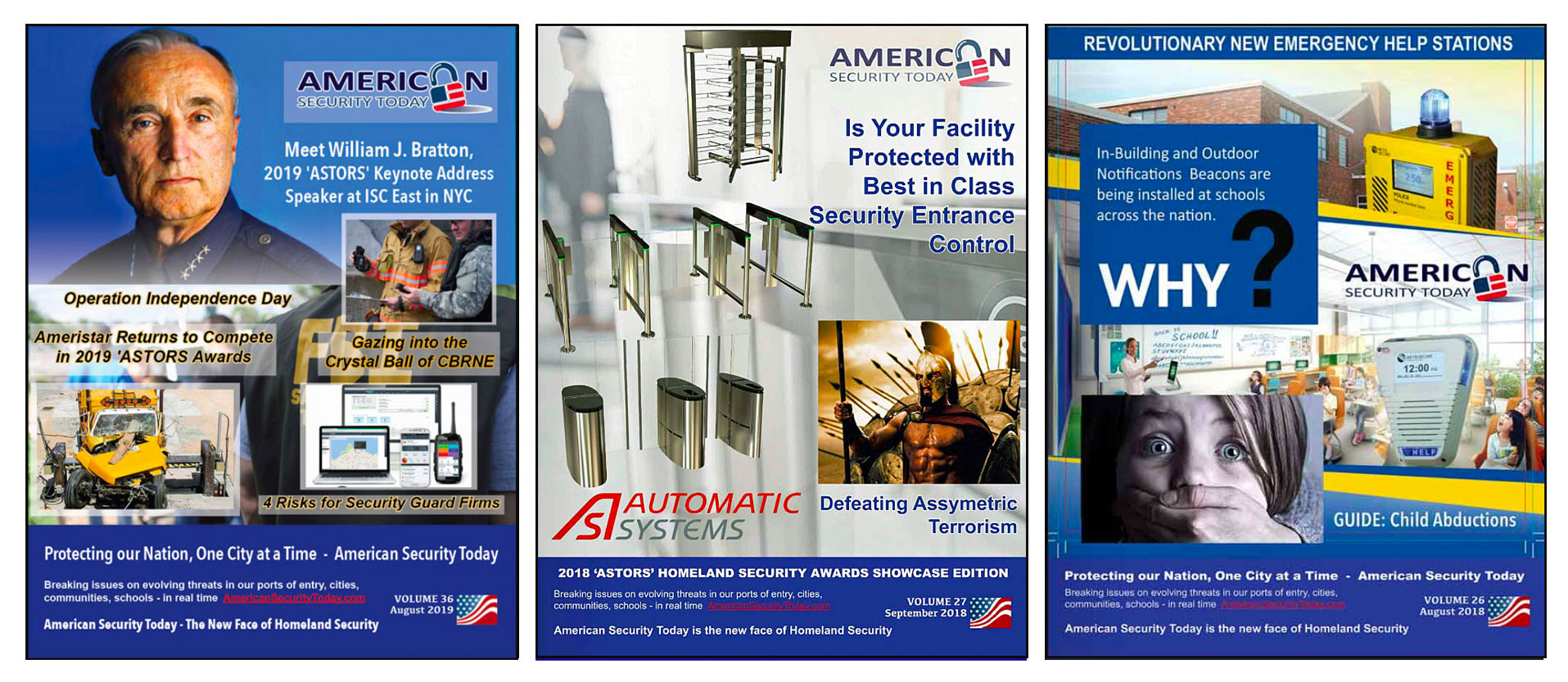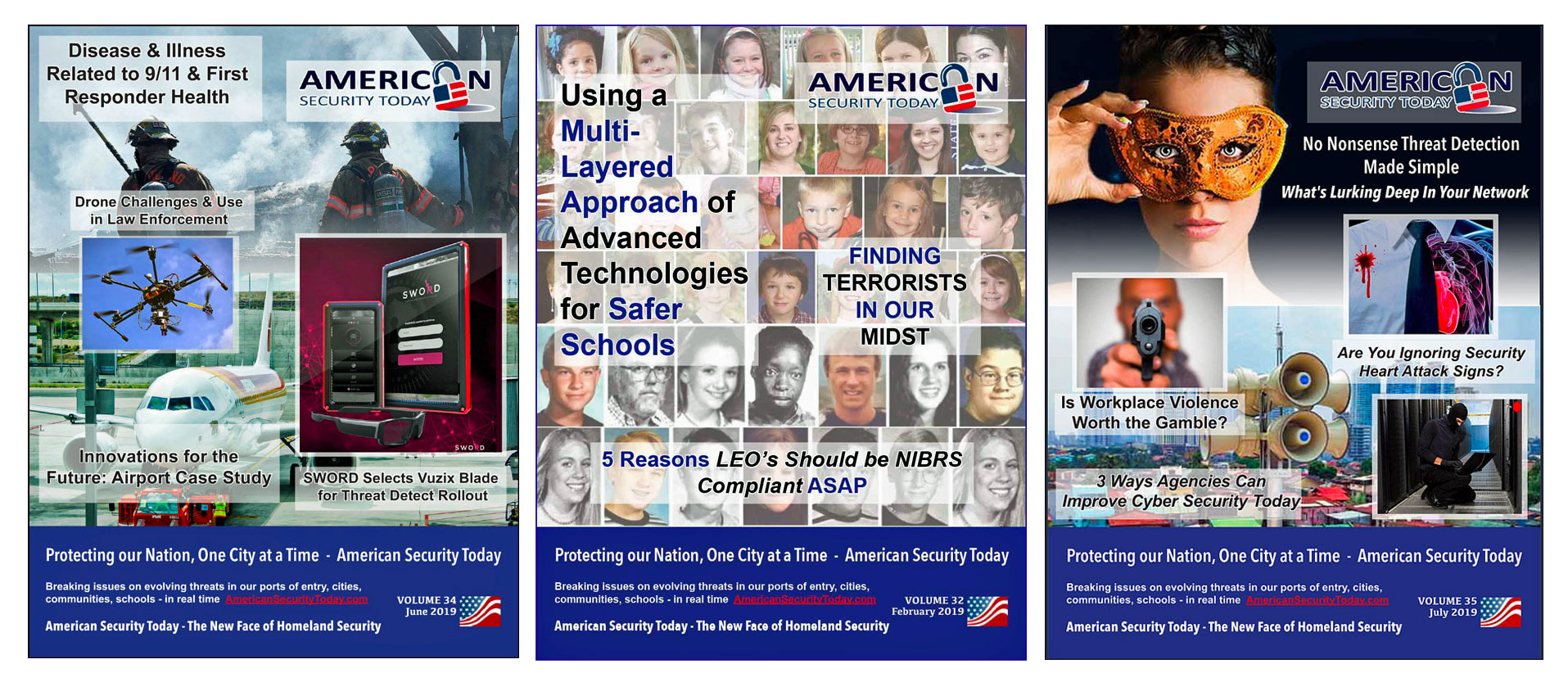Guest OpEd by Dean C. Alexander and Niyazi Ekici*
Worldwide over 28.2 million people have contracted COVID-19 and more than 911,000 persons perished as of September 11, 2020. By the same date in the United States, 6.4 million got the virus while 191,000 died.**
COVID-19 has induced negative effects globally across industries, governments, non-governmental organizations, and non-profit entities, among others.
(COVID-19 now the third leading cause of death in the US. Courtesy of ABC News and YouTube. Posted on Aug 18, 2020.)
As the gravity of COVID-19 was recognized and expanded in the United States, we commenced a research project to gauge the impact of the pandemic on law enforcement agencies.
Our study began with a survey of more than 200 Illinois police departments during June 2020. The survey results indicate that COVID-19 has significantly affected both the internal and external operations of Illinois police departments.
These ramifications are particularly profound as they relate to safety measures and risk mitigation strategies implemented to protect police personnel and the public they serve.
Ninety-four percent of respondents said new safety measures have been deployed including measures such as: the distribution of personal protection equipment (PPE), new methodologies to interact with the public, social distancing, encouraging hand washing and use of hand sanitizer, frequent sanitizing of squad cars, and cleaning police stations.
Despite the nearly universal (94 percent) reporting of the use of new safety procedures, only 75 percent of respondents believed their departments had an increased interest for their physical and emotional wellness.
(See how law enforcement is attempting to protect themselves from COVID-19. Courtesy of ABC13 Houston and YouTube. Posted on Mar 19, 2020.)
There appears to be some dissonance between these two responses as one might anticipate that adoption of enhanced safety protocols would positively influence employee perceptions regarding employer concern.
These somewhat inconsistent answers were proffered because, apparently, some employees perceive that their superiors are not especially worried about their health and welfare despite the fact they acknowledged that safety measures have been taken on their behalf.
Unsurprisingly, 58 percent of participants perceive that they were at greater risk than before the pandemic.
In addition to traditional law enforcement officer safety concerns, for example, the potential for violent encounters, COVID-19 has added another layer of risk.
Anxiety regarding disease transmission from the public or during other workplace interactions, and the practical requirements of social distancing, could reduce efficiency and effectiveness of policing to some degree.
After all, operational activities used before the pandemic were not restricted by social distancing.
(Early on the Milwaukee Police Department speaks to the added stressors officers are facing as a result of trying to fight the spread of COVID-19. Courtesy of TMJ4 News and YouTube. Posted on Apr 22, 2020.)
Given the characteristics of the virus reported to public health authorities, transmission may arise from both symptomatic and asymptomatic carriers, more so with those unmasked and unable to socially distance.
Still, the ability of public health officials to share with police information about individuals who tested positive for COVID-19 aids police in taking a more secure posture with such individuals.
(A preliminary report of officer fatalities suggests COVID-19 could be a leading cause of death for officers this year. Courtesy of WUSA9 and YouTube. Posted on Jul 14, 2020.)
Tragically, for instance, in late May 2020, 526 Chicago Police Department officers tested positive for COVID-19, 347 of whom have recovered and returned to work, while three of their colleagues died.
The Fraternal Order of Police reported that nationally 225 police officers have died from COVID-19, including ten in Illinois by July 21, 2020.
Personnel at police departments of all sizes are at risk to pandemic caused illness. Small sized departments are notably vulnerable if multiple members fall ill, must be quarantined, or pass away.

Eighty-three percent of police noted they reduced public access to their facilities. A similar percentage lowered their use of community policing activities.
Accordingly, community policing services were lessened by over 80 percent of the departments surveyed.
As crime often goes unreported—as demonstrated by often large disparities between reported crimes and crime victim surveys—the importance of community policing to capture this gap is crucial.
Against this backdrop, access to police departments has declined so that physical accessibility and connection by the public to police has dropped.
Also, less community policing means that the police’s understanding of the communities they serve is diminished. As such, reduced knowledge of criminal activity and other developments in the neighborhoods will likely take root.
A smaller police footprint may engender incipient hostility towards police or less so, depending on police-community relations.
(Chicago police claim they will shift more officers to focus on community policing in neighborhoods across the city following a successful pilot program on the Northwest Side. Courtesy of WGN News and YouTube. Posted on Aug 20, 2020.)
In addition, suspension of citizen ride-alongs and citizen academies as well as the elimination of in-person police-community forums undermine police-citizen cohesion.
Leveraging virtual forums, conference calls, and outreach to community leaders in the non-physical world can bridge the limitations on street-level, (physical) community links caused by the pandemic.
Reductions in enforcement actions and in-person responses to calls for service were found among 78 percent and 76 percent of respondents, respectively.
In combination, these declines raise questions regarding the needs of the public being met to the same standard they were prior to COVID-19.
New types of enforcement actions relating to face covering orders, shelter in place orders, and policing newly-designated essential and non-essential businesses are among the roles that were absent before this health crisis.
In so doing, law enforcement has been placed in an unenviable role of having to enforce pandemic-related rules that are opposed by some vocal constituencies.
Interestingly, while facial covering has been encouraged to reduce transmission of the virus, they have been used by criminals to hide their identities.
(For 56 consecutive nights, Portland protesters have faced off in often violent clashes with local police, and more recently, federal agents. Courtesy of CBC News and YouTube. Posted Jul 26, 2020.)
Concomitantly, arrests, traffic stops, and investigatory stops have largely declined nationally.
Impediments to traditional policing precipitated by COVID-19 are likely to endure until the disease spread has decelerated.
Gun violence, murder, domestic violence, and robberies have surged in some large cities during the pandemic.
Tangentially pandemic-connected crimes (e.g., aggravated assaults, stabbings, and murders of individuals enforcing the use of face coverings or those opposed to face masks) have tragically emerged nationwide.
The further fracturing of segments of US society in recent months have also bore witness to a variety of criminal conduct: hate crimes, vehicle attacks, arson, and damage to public and private property by individuals of all walks of life.
Law enforcement must contend with these new stressors as well.
(In a one-on-one interview at NYPD headquarters Thursday, the chief of department, Terence Monahan told Eyewitness News that the single biggest reason for the sudden spike in violent crime in New York City is not the gridlocked court system and not the economy, it’s a deep-seated “hatred of the police.” Courtesy of Eyewitness News ABC7NY and YouTube. Posted on Jul 16, 2020.)
Next, the survey found that 82 percent of police agencies suspended their police academies and in-service training activities. Stopping the flow of new recruits delays the replacement of those who retire, resign, or fall ill.
The elimination of in-service training weakens the capabilities and knowledge of existing officers. The need to introduce enhanced police training, especially in light of challenges emerging from the pandemic and protests, is paramount now.
Issues ranging from responding to protests, de-escalation techniques, community policing, and diversity training appear warranted. Also, the opportunity to assess possible new approaches to policing might be delayed until the virus dissipates.
(Major cities on the West Coast saw more violent protests over the weekend. In Los Angeles, businesses were looted as angry mobs ignored curfews. Courtesy of TODAY and YouTube. Posted on Jun 1, 2020.)
Likewise, 80 percent of departments stated they modified their roll call procedures due to COVID-19. Whether such changes to roll call practices hinder information sharing, cohesion within departments, and police effectiveness remains to be seen.
Other operational findings included that 68 percent of agencies modified personnel scheduling. Depending on the circumstances, officers were tasked to work remotely and separately.
Here too, what impact will these adjustments have in terms of productivity, efficacy, teamwork, and information sharing within departments during this pandemic?
Sixty-two percent of departments expressed they limited staff access to specific police facilities. What are the consequences on police operations from this reduced physical proximity among colleagues?
(National Vice President Joe Gamaldi joined Fox & Friends to discuss how dangerous the anti-police climate can be. After the Rochester Police Chief became the latest to step down due to the anti-police climate, Vice President Gamaldi explains how dangerous changes in leadership can be during this time of unrest. Courtesy of Fox News, National Fraternal Order of Police, and YouTube. Posted on Sep 10, 2020.)
As elsewhere within the US labor market, 30 percent of police departments stated they furloughed or reduced staffing due to COVID-19. These pressures on personnel may result in staff shortages and declining morale.
Even prior to the pandemic, the law enforcement profession was experiencing well documented difficulties recruiting new officers and lateral hires.
Budgetary pressures arising from reduced state and local tax revenues due to lessened business activity during the pandemic will put additional strains on funding new entrants to police departments.
Also, the emergence of calls to categorically defund the police or to otherwise reduce police budgets going forward introduces unprecedented fiscal uncertainty with likely negative repercussions on the overall recruiting and staffing environment.
(As protesters push to defund the police, city councils across America have difficult decisions ahead. Several officers nationally are resigning or retiring early. Courtesy of WFAA and YouTube. Posted on Aug 11, 2020.)
The realities of social distancing are also a substantial potential source of individual officer stress.
Some members of the public are likely to be on edge due to the consequences of the novel coronavirus.
For instance, selected community members have been mostly confined to their homes for weeks or months.
Others may have experienced job losses, reduced income, modified their living conditions, and added pressures in their familial settings and social networks.
The increasingly acerbic political climate emanating from the pandemic include tensions over: stay-at-home orders, closure or restrictions on non-essential businesses, and different perspectives on the benefits (or mandates) of face coverings and social distancing, changes in work conditions, and calls for school and university openings.
All these variables, coupled with protests and anti-police sentiments hastened by the killing of George Floyd and other African Americans by police, make policing particularly challenging at this point.
(Warning: Disturbing images. Fencing surrounding a federal courthouse in Portland was pulled down on Saturday night as police fired tear gas to disperse protesters on the 59th night of unrest. Courtesy of Global News and YouTube. Posted on Jul 26, 2020.)
In sum, this study shows that during June 2020 the consequences of COVID-19 on Illinois law enforcement were significant.
How long these changes in protocols and viewpoints of police will endure depend on the potency and length of the pandemic.
Too, some modifications to policing implemented during the pandemic (e.g., reduced access by the public to department facilities and leveraging technologies) may continue as they might be recognized as improving safety and increasing efficiency in police practices.
Continued community engagement during the pandemic—although stymied by operational changes and health risks—is critical as it affords law enforcement to better serve their constituencies.
The upsurge in COVID-19 cases nationally during the third week of July 2020 portends that the perils and uncertainty that face police in Illinois and elsewhere will endure for the foreseeable future.
(As coronavirus lockdowns expanded globally, billions of people found that they were faced with unprecedented restrictions. Take a look at some of the extreme strategies international governments are using to police their citizens – from teargas and death threats to beatings and chemicals. Courtesy of The Guardian and YouTube. Posted on Apr 2, 2020.)
* Dean C. Alexander and Niyazi Ekici are professors at Western Illinois University’s School of Law Enforcement and Justice Administration.
**https://coronavirus.jhu.edu/map.html
Dean C. Alexander Recognized in the 2019 ‘ASTORS’ Security Awards Program
Dean C. Alexander
-
Excellence in Homeland Security
-
Mr. Dean Alexander is the Director, Homeland Security Research Program & Professor at Western Illinois University.
-
Prof. Alexander’s teaching, research, and speaking activities encompass terrorism, security, and legal issues and he is a regular guest contributor to American Security Today.

-
He has lectured in ten countries, including to law enforcement and military officials, including at the National Intelligence University, NATO’s Centre of Excellence Defence Against Terrorism, Illinois Statewide Terrorism and Intelligence Center, Oregon Fusion Center, Michigan State Police, Milwaukee Police Department, McAllen Police Department, and Northern California Regional Intelligence Center, among others.
-
Prof. Alexander’s professional experience includes executive, business development, and legal positions in the United States and abroad, including Chile, Israel, and the United Kingdom.
-
He worked as a consultant to the World Bank, Organization of American States, homeland security firms, and investment companies.
The Annual ‘ASTORS’ Awards Program is specifically designed to honor distinguished government and vendor solutions that deliver enhanced value, benefit and intelligence to end users in a variety of government, homeland security and public safety vertical markets.
The Annual ‘ASTORS’ Awards is the preeminent U.S. Homeland Security Awards Program highlighting the most cutting-edge and forward-thinking security solutions coming onto the market today, to ensure our readers have the information they need to stay ahead of the competition, and keep our Nation safe – one facility, street, and city at a time.
90% of ‘ASTORS’ Award Winners return to compete in the Annual ‘ASTORS‘ Homeland Security Awards Program, and 100% of ‘ASTORS’ Sponsors have returned year to year to reap the benefits of their participation in the industry’s largest and most comprehensive Annual Awards Program.

The 2019 ‘ASTORS’ Awards Program surpassed expectations with a record number of nominations received from industry leaders and government agencies, and drew over 200 attendees to the ‘ASTORS’ Awards Presentation Banquet – an exclusive gourmet luncheon and networking opportunity which filled to capacity, before having to turn away late registrants.
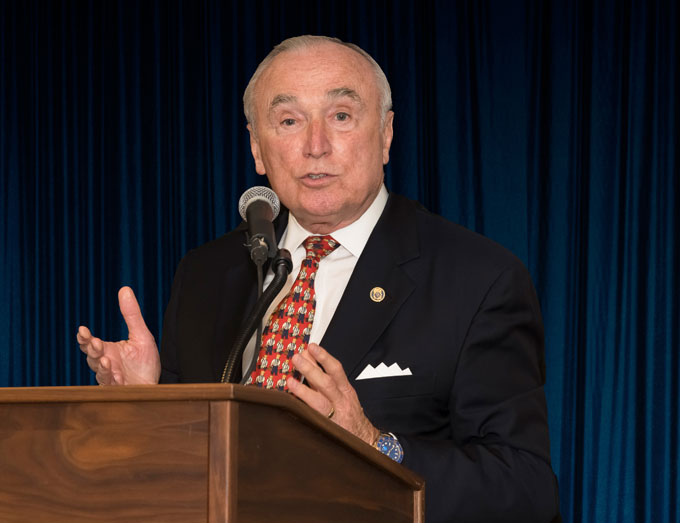
The event featured an impassioned and compelling keynote address by William J. Bratton, former police commissioner of the New York Police Department (NYPD) twice, the Boston Police Department (BPD), and former chief of the Los Angeles Police Department (LAPD), as he walked attendees through 50 years of American policing history, the impacts on the communities, and the evolution of critical communication capabilities in our post 9/11 landscape.
Commissioner Bratton, one of the world’s most respected and trusted experts on risk and security issues and Executive Chairman of Teneo Risk a global advisory firm, was recognized as the ‘2019 ‘ASTORS’ Person of the Year’ for his Lifetime of Dedication and Extraordinary Leadership in Homeland Security and Public Safety.
The 2020 ‘ASTORS’ Awards Program is sponsored by ATI Systems, Attivo Networks, Automatic Systems, Desktop Alert, X.Labs and Reed Expositions, every one a returning Sponsor from 2019.
Why the ‘ASTORS’ Homeland Security Awards Program?

American Security Today’s comprehensive Annual Homeland Security Awards Program is organized to recognize the most distinguished vendors of physical, IT, port security, law enforcement, and first responders, in acknowledgment of their outstanding efforts to ‘Keep our Nation Secure, One City at a Time.’
Over 200 distinguished guests representing Federal, State and Local Governments, and Industry Leading Corporate Firms, gathered from across North America, Europe and the Middle East to be honored among their peers in their respective fields which included:
- The Drug Enforcement Administration (DEA)
- National Center for Missing and Exploited Children (NCMEC)
- United States Marine Corps
- The Federal Protective Service (FPS)
- Argonne National Laboratory (ANL)
- United States Postal Inspection Service
- DHS S&T
- United States Marshals Service (USMS)
- The Port Authority of New York & New Jersey Police (PAPD)
- The Department of Justice (DOJ)
- The New York State Division of Homeland Security & Emergency Services (NYS DHSES)
- United States Border Patrol
- AlertMedia, Ameristar Perimeter Security, Attivo Networks, Automatic Systems, Bellevue University, BriefCam, Canon U.S.A., CornellCookson, Drone Aviation, FLIR Systems, Hanwha Techwin, HID Global, IPVideo Corp., Konica Minolta Business Solutions, LenelS2, ManTech, Regroup Mass Notifications, SafeLogic, SolarWinds, Senstar, ShotSpotter, Smiths Detection, TCOM LP, Trackforce, Verint, and More!
From innovative Military Cyber Programs, to Local, State and Federal Public Safety and Emergency Management Initiatives, New Physical and IT Products and Services, and Security Professional, Threat Assessment, Emergency Preparedness, Law Enforcement and Homeland Security Education and Training Opportunities – Join your ‘ASTORS’ Award-Winning Peers and Receive the Recognition You Deserve!
 Excellence in Public Safety and Government Security Award Nominations are also encouraged, such as those 2019 Honored Winners which includes the DEA, U.S. Marine Corps, DHS S&T, Federal Protective Service, DHS S&T NUSTL, U.S. Marshals Service, U.S. Border Patrol, The Port Authority of NY/NJ, and the NYS Division of Homeland Security & Emergency Services.
Excellence in Public Safety and Government Security Award Nominations are also encouraged, such as those 2019 Honored Winners which includes the DEA, U.S. Marine Corps, DHS S&T, Federal Protective Service, DHS S&T NUSTL, U.S. Marshals Service, U.S. Border Patrol, The Port Authority of NY/NJ, and the NYS Division of Homeland Security & Emergency Services.
Individuals are also encouraged to be nominated for Government Excellence in Public Safety and Homeland Security such as last years widely respected recipients.
Why American Security Today?
The traditional security marketplace has long been covered by a host of publications putting forward the old school basics to what is Today – a fast changing security landscape.
The traditional security marketplace has long been covered by a host of publications putting forward the old school basics to what is Today – a fast changing security landscape.
American Security Today is uniquely focused on the broader Homeland Security & Public Safety marketplace with over 75,000 readers at the Federal, State and local levels of government as well as firms allied to government.
American Security Today brings forward a fresh compelling look and read with our customized digital publications that hold readers eyes throughout the story with cutting edge editorial that provides solutions to their challenges.
Harness the Power of the Web – with our 100% Mobile Friendly Publications

The AST Digital Publications is distributed to over 75,000 qualified government and homeland security professionals in federal, state and local levels.
‘PROTECTING OUR NATION, ONE CITY AT A TIME’
AST Reaches both Private & Public Experts, essential to meeting these new challenges.
Today’s new generation of public safety and security experts need real-time knowledge to deal with domestic and international terrorism, lone wolf attacks, unprecedented urban violence, shifts in society, culture and media bias – making it increasingly difficult for Homeland Security, Law Enforcement, First Responders, Military and Private Security Professionals to implement coordinated security measures to ensure national security and improve public safety.
These experts are from Government at the federal, state and local level as well as from private firms allied to government.
AST provides a full plate of topics in our AST Monthly Magazine Editions, AST Website and AST Daily News Alerts, covering 23 Vital Sectors such as Access Control, Perimeter Protection, Video Surveillance/Analytics, Airport Security, Border Security, CBRNE Detection, Border Security, Ports, Cybersecurity, Networking Security, Encryption, Law Enforcement, First Responders, Campus Security, Security Services, Corporate Facilities, and Emergency Response among others.
AST has Expanded readership into integral Critical Infrastructure audiences such as Protection of Nuclear Facilities, Water Plants & Dams, Bridges & Tunnels, and other potential targets of terrorism.
Other areas of concern include Transportation Hubs, Public Assemblies, Government Facilities, Sporting & Concert Stadiums, our Nation’s Schools & Universities, and Commercial Business Destinations – all enticing targets due to the large number of persons and resources clustered together.
To learn more about the 2019 ‘ASTORS’ Homeland Security Award Winners solutions, please go to the 2019 ‘ASTORS’ Championship Edition Fully Interactive Magazine – the Best Products of 2019 ‘A Year in Review’.
The ‘ASTORS’ Champion Edition is published annually and includes a review of the ‘ASTORS’ Award Winning products and programs, highlighting key details on many of the winning firms products and services, includes video interviews and more.
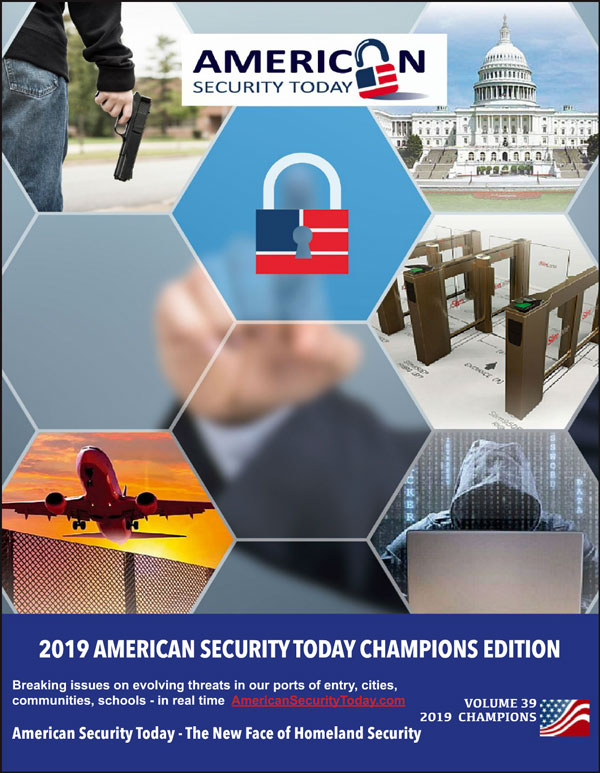 It is your Go-To source throughout the year for ‘The Best of 2019 Products and Services‘ endorsed by American Security Today, and can satisfy your agency’s and organization’s most pressing Homeland Security and Public Safety needs.
It is your Go-To source throughout the year for ‘The Best of 2019 Products and Services‘ endorsed by American Security Today, and can satisfy your agency’s and organization’s most pressing Homeland Security and Public Safety needs.
From Physical Security (Access Control, Critical Infrastructure, Perimeter Protection and Video Surveillance Cameras and Video Management Systems), to IT Security (Cybersecurity, Encryption, Data Storage, Anti-Malware and Networking Security – Just to name a few), the 2019 ‘ASTORS’ CHAMPIONS EDITION will have what you need to Detect, Delay, Respond to, and Mitgate today’s real-time threats in our constantly evolving security landscape.
It also includes featured guest editorial pieces from some of the security industry’s most respected leaders, and recognized firms in the 2019 ‘ASTORS’ Awards Program.
For more information about advertising opportunities with American Security Today, please contact Michael Madsen, AST Publisher at mmadsen@americansecuritytoday.com.
AST strives to meet a 3 STAR trustworthiness rating, based on the following criteria:
- Provides named sources
- Reported by more than one notable outlet
- Includes supporting video, direct statements, or photos













